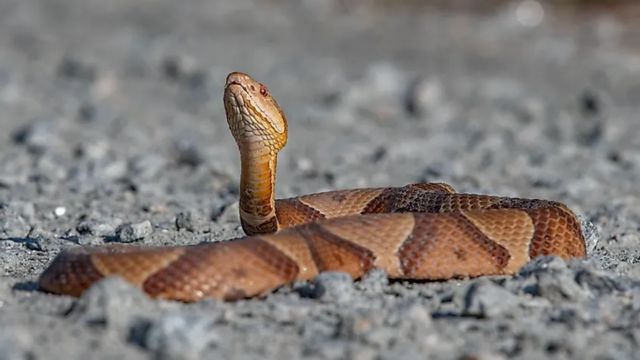Virginia, celebrated for its Appalachian vistas and Atlantic shores, carries a history as one of America’s original colonies and hosts numerous historical landmarks. Yet, beyond its historical tapestry, Virginia is a state teeming with wildlife, including several species that pose significant risks to humans. Here’s an overview of the 12 deadliest animals you might encounter in this diverse state.
Copperhead Snakes
Copperhead bites, while rarely fatal, should be taken seriously due to their painful and potentially harmful effects. These snakes are responsible for a large percentage of the venomous snake bites in the United States. They are often found in less disturbed natural areas such as woodpiles and abandoned farms, making an unexpected encounter possible.
Brown Recluse Spiders
Known for their reclusive nature, these spiders can deliver bites that occasionally lead to severe reactions, including necrosis. Typically found indoors or in sheltered outdoor areas, brown recluses are more likely to bite when threatened, underscoring the importance of caution in areas they inhabit.
Coyotes
Coyotes, adaptable and cunning, pose a risk primarily to pets but can also threaten human safety under certain conditions. Although attacks on humans are rare, the presence of coyotes in both rural and urban areas makes encounters possible, particularly at dawn and dusk when they are most active.
Timber Rattlesnakes
Among the most dangerous animals in Virginia, timber rattlesnakes possess potent venom capable of causing severe injury or death. These snakes favor forested areas and are protected under Virginia law, emphasizing the need for awareness and caution during outdoor activities.
Black Bears
Black bears, although generally shy, can be dangerous if provoked. Encounters are most likely in forested areas where bears roam in search of food. While attacks on humans are rare, the potential for harm makes it crucial to practice bear safety in bear-inhabited regions.
Cottonmouth Snakes
The venomous cottonmouth, or water moccasin, inhabits Virginia’s wetlands and waterways. Its bite can cause significant tissue damage, making it one of the state’s more fearsome reptilian residents. Awareness and caution near water can reduce the risk of an unwanted encounter.
Porcupines
While not aggressive, porcupines can inflict painful injuries with their quills if threatened. Typically found in forested areas, these creatures are best admired from a distance to avoid unintentional quill contact.
Wild Boars
Introduced species with aggressive tendencies, wild boars are capable of causing injury and spreading diseases. They are prevalent in several counties throughout Virginia and are known for their destructive behavior, prompting caution in areas they inhabit.
Black Widow Spiders
The venom of a black widow is notably potent, making these spiders extremely dangerous. Commonly found in undisturbed parts of homes or sheds, black widows require careful handling to avoid bites, which necessitate immediate medical attention.
Bull Sharks
Bull sharks, known for their ability to swim in both salt and freshwater, pose a potential threat to beachgoers and those frequenting Virginia’s waterways. Though shark attacks are rare, the possibility exists, underscoring the need for vigilance near water.
Rats
Often underestimated, rats can carry diseases harmful to humans. Urban and suburban areas, where rats are likely to seek refuge and food, are hotspots for potential exposure to the diseases they carry.
Elk
Elk can be unpredictable and dangerous, particularly during mating seasons and when calves are present. Encounters with elk require caution, as they are capable of aggressive behavior when threatened.
Conclusion
While Virginia offers a rich tapestry of historical and natural attractions, it also hosts a variety of wildlife that can pose dangers to humans. Understanding these risks and respecting wildlife habitats is crucial for safe exploration and coexistence. Whether visiting historical sites or exploring Virginia’s natural landscapes, awareness and preparedness can help ensure a safe and enjoyable experience amidst the state’s diverse wildlife.

